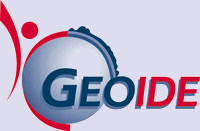Methodology
For Component 2.1
We are targeting the analysis system performance for given architecture(s) under nominal and degraded conditions even before GPS II-M, GPS III and Galileo are fully operational. Understandings have been made with Dr. Lachapelle, Leader of GEOIDE Project “Geomatics Enhancements with dual use of GPS II/III and Galileo”. They will provide synthetic data from their developed GNSS measurement software simulator (SimGNSS2™) for our intended analysis and we will share our results with them. Our results should benefit further their enhancements. We will perform analysis of real, modernized, GPS and Galileo data as they become available. For this purpose we rely on many of our US and European partners as well as the CSA.
For Component 2.2
The varied applications of GNSS positioning imply the use of several types of observations and combinations among them, providing distinct levels of accuracy. The highest level of accuracy in positioning and navigation is achievable by means of fixing carrier-phase ambiguities to integer values. There are techniques well established in handling GPS signals alone. We will be developing and testing new ones dedicated to the modernized signals. Analyses performed during research component 2.1 will help with the design and evaluation of various combinations of multi-frequency carrier-phase observations using GPS and Galileo signals, either simulated or real, independently or not, with a goal to improve the final positioning accuracy. These combinations may result in the increase of errors and noise. Minimization of these errors is important especially for high accuracy applications, enhancing the modes of single-point and relative positioning by novel algorithm design using combined signals.
For Component 2.3
A very important mode of positioning with GPS is the one known as RTK, which allows cm-level positioning and navigation. We will use the modernized signals to increase the capabilities of real-time error modeling, including the development of efficient GNSS observation integration algorithms for orbit determination, carrier phase ambiguity resolution, atmosphere parameter determination as well as integrity monitoring. This will also allow a better understanding of the effects of the propagation environment on system performance and estimate figures of merit for system performance, such as: accuracy (e.g. position and time); availability (e.g. of position and time accuracy, integrity); continuity (e.g. of position accuracy, integrity); and integrity (e.g. integrity risk, time to alarm). Understandings have been made with Dr. Lachapelle, leader of GEOIDE Project “Geomatics Enhancements with dual use of GPS II/III and Galileo”. We have agreed we will focus on static and navigation applications. We will discuss and share results between the two projects.
For Component 2.4
Developments arising from the previous research components will permit us the identification of novel applications that the new augmentation infrastructure can support. The new infrastructure will open up many new applications currently difficult or infeasible. For instance, precise point positioning (PPP) is a new positioning technology currently under development based on the Canadian Active Control System infrastructure, by the Geodetic Survey Division with the support of provincial services (its real-time pseudorange-only service is know as CDGPS). The additional positioning signals from Galileo will greatly enhance capability of the augmentation infrastructures to support centimetre-accurate PPP within Canada as well as on a global scale. We will be using the current infrastructure to test this potential capability. Another important application is in support of current GPS and GPS/Galileo space geodetic missions. Current space geodetic missions, using low-earth orbit (LEO) satellites, are used for the improved mapping of gravity field, which has broad range of applications in earth sciences (hydrology, glaciology, geophysics and oceanography) and profiling the atmosphere. The resolution of these applications is prone to be enhanced and we intend to perform design studies for this purpose. A third group of applications is related to sensing the environment. GPS is already being used for this purpose in various tests currently underway. New windows of opportunity will open with the modernized systems. The higher accuracy envisaged could be used, for example, in permanent arrays for the near-real-time monitoring of crustal motions (such the one maintained by the Pacific Geoscience Centre) or for helping weather prediction and monitoring climate change. Understandings have been made with Dr. Skone, leader of GEOIDE Project “A National System for Water Vapour Estimation using GPS and its Applications”. We have agreed to provide her with input to help with their efforts for a better understanding and monitoring of the non-hydrostatic atmosphere.
